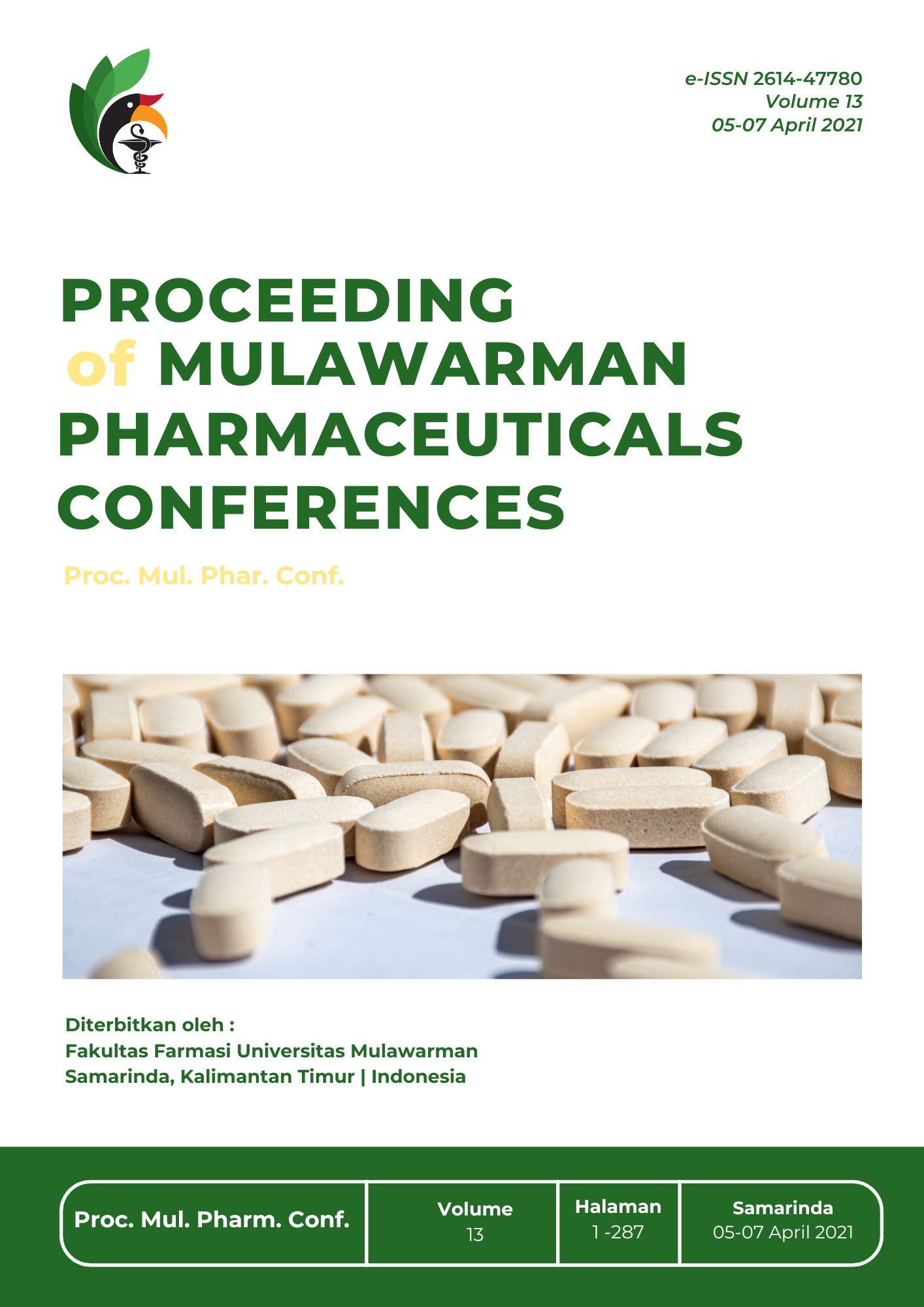Formulation and Physical Quality Test for Onion Skin Extract Solid Soap (Allium cepa L)
DOI:
https://doi.org/10.30872/mpc.v13i.253Keywords:
Solid soap, Allium Cepa L, physical qualityAbstract
Shallots are one of the many types of plants available in Indonesia. Shallots are annual plants that can grow in the highlands and lowlands. In its use, shallots produce a lot of waste in the form of skin which can be processed into solid soap preparations because they contain antibacterial properties derived from flavonoid compounds. This study aims to produce solid soap onion skin extract and test the physical quality of the preparation according to the Indonesian National Standard (SNI). The research method was experimental which consisted of making simplicia and extracting it by maceration method using 70% ethanol as a solvent. Red onion peel extract formulations were used with a concentration of 5% (Formulation 2) and 0% (formulation 1) as the control basis. Evaluation of solid soap preparations includes organoleptic observation, homogeneity testing, foaming test, pH testing. The preparation was evaluated for 4 weeks at room temperature. Data were analyzed descriptively and compared with SNI. The results of this study indicate that the soap preparation is homogeneous, has a solid texture, is light brown (formulation 1), and dark brown (formulation 2). The average pH value in formulation 1 and formulation 2 is 9. The results of the organoleptic test on solid soap preparations did not change, from the first week to the fourth week it was getting denser. The foam power test on both formulations showed the presence of foam that came out when the test was carried out. The conclusion in this study is that the physical quality of onion skin extract solid soap is in accordance with SNI and is stable for 4 weeks of storage.
References
[1] Samadi, B. dan Cahyono, B., 2005. Bawang Merah Intensifikasi Usaha Tani. Kanisius, Yogyakarta.
[2] Soebagio, B., Rusdiana, T. dan Khairudin. 2007. Pembuatan Gel dengan Aqupec HV-505 dari Ekstrak Umbi Bawang Merah (Allium cepa, L.) sebagai Antioksidan. Fakultas Farmasi, Universitas Padjadjaran. Bandung
[3] Effendi, Hefni. 2003. Telaah Kualitas Air: Bagi Pengelolaan Sumber Daya dan Lingkungan Perairan. Penerbit : Kanisius. Yogyakarta
[4] Muliyawan, Dewi & Suriana, Neti (2013), A-Z Tentang Kosmetik, Jakarta: PT Elex Media Komputerindo
[5] Andy, 2009, Pengetahuan dan Sikap Remaja SMA Santo Thomas 1 Medan Tehadap Jerawat, Skipsi, Fakultas Kedokteran, Universitas Sumatra Utara Medan.
[6] Suryana. 2013. Ekonomi Keatif, Ekonomi Baru: Mengubah Ide dan Menciptakan Peluang. Jakarta: Salemba Empat.
[7] Anggraini, D., Malik, M., dan Susiladewi, M., 2011, Formulasi Krim Serbuk Getah Buah Pepaya (Carica papaya L) Sebagai Anti Jerawat, Jurnal Fakultas Farmasi Universitas Andalas, Riau.
[8] Harnawi, T. 2004. Studi Pembuatan Sabun Cair dengan Bahan Baku Minyak Goreng Hasil Reproseing. Skripsi. Fakultas Teknologi Pertanian Universitas Brawijaya. Malang.
[9] Maulana A, Susilo. H, dan Rustiani.E. 2013, Pembuatan Sabun Transparan Aromaterapi Minyak Atsiri Akar Wangi (Chrysopogon zizanioides (L.)Roberty, Jurnal, Program Studi Farmasi, FMIPA, Universitas Pakuan,Bogor.
[10] Badan Standarisasi Nasional, 1994, Standar Mutu Sabun Mandi, SNI 06-3532-1994, Dewan Standarisasi Nasional, Jakarta.
Downloads
Published
Issue
Section
License
Copyright (c) 2021 Adelya Youan Nurdiana, Elly Purwati, Cikra Ikhda Nur Hamidah Safitri (Author)

This work is licensed under a Creative Commons Attribution-NonCommercial 4.0 International License.


